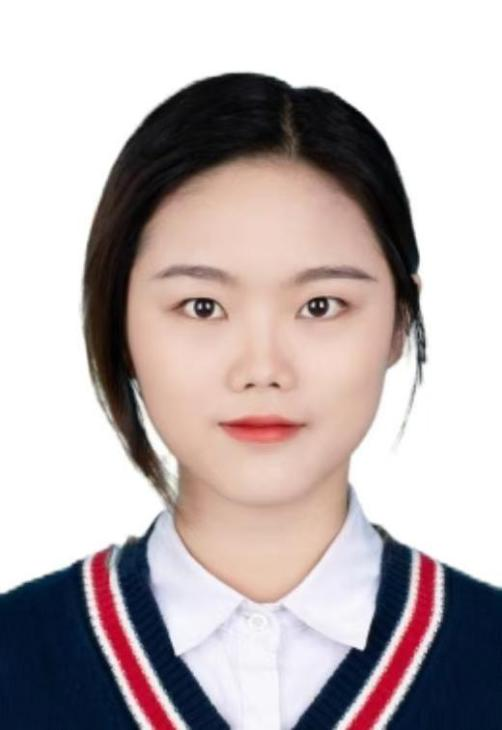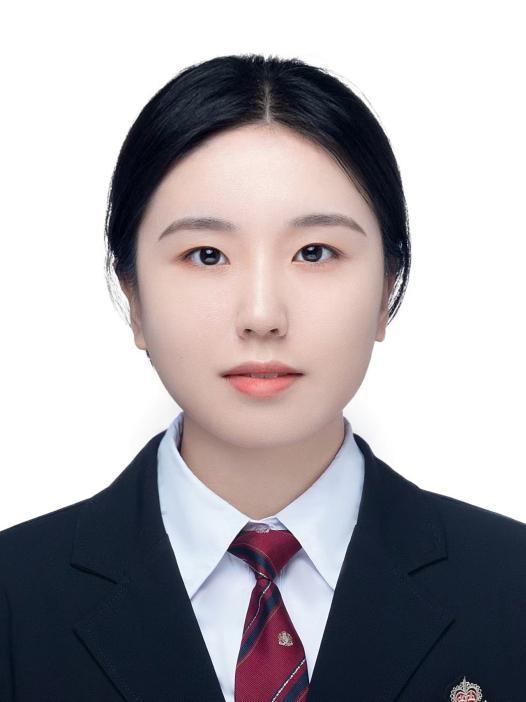
IEONG Chio-In
Ph.D., Principal Investigator
Email: yangchaoran@@gdiist.cn
Personal Profile
Dr. Chio-In IEONG graduated from Ph.D. in 2016 from the Department of Electrical and Electronics Engineering, as well as the National Key Laboratory of Analog and Mixed- Signal VLSI in University of Macau, where he engaged in research on ultra-low power CMOS ECG detection algorithms and application-specific digital processor chips. He served as a technician and functional head at the above key laboratory in University of Macau, for digital VLSI design and EDA CAD. From 2017 to 2023, he worked at Huawei Technologies Co., Ltd. in Shenzhen, to research and develop of Ascend AI processors, deep learning algorithms and systems, digital human and embodied intelligence, bird's-eye view perception algorithm and system for autonomous driving, etc., and was responsible for several technology research collaborations with renowned universities.
Dr. IEONG has received several awards including ISSCC Travel Grant Award, the Third Huawei Company’s Top Ten Inventions Award. He has published over 25 papers in SCI journals and international conferences, and holds three Chinese patents, and one United States patent, all of which are granted. His research results have been published in journals and conferences such as IEEE Transactions on Biomedical Circuits and Systems, IEEE Transactions on Very Large Scale Integration (VLSI) Systems, International Solid-State Circuits Conference (ISSCC) SRP, IEEE International Conference on Consumer Electronics (ICCE), Annual International Conference of the IEEE Engineering in Medicine and Biology Society (EMBC), etc. Among them, the academic paper published in "IEEE Transactions on Biomedical Circuits and Systems" named "A 0.83-μW QRS Detection Processor Using Quadratic Spline Wavelet Transform for Wireless ECG Acquisition in 0.35-μW CMOS" has been widely cited by two Nature scientific reports, an academic book, and 100+ papers in this subfield.
Laboratory of Brain-Inspired Open-World Intelligence
The intelligence of organisms in nature resides within their bodies, which exist in the three-dimensional physical world. The motivation behind embodied intelligence research is to place intelligence in the real-world constraints of the three-dimensional physical world, with focus on perception, understanding, interaction, and knowledge acquisition from the environment through seeing, hearing, speaking, reasoning, and acting in a more "human-like" manner towards the environment. This scenario constraint of embodied intelligence is ubiquitous and makes the research more targeted. The field of embodied intelligence attracts interdisciplinary researchers from computer vision, language, graphics, and robotics, including renowned researchers like Fei-Fei Li, to solve common problems in the field of embodied intelligence, and advance the development of digital humans and robots, autonomous driving, human-machine interaction, and other domains. Recently, the development of language foundation models has significantly enhanced the reasoning ability based on natural language models, offering new opportunities for vision-language models. The research group hopes to combine visual perception and language reasoning abilities to tackle complex and diverse scene challenges in the real world.
Brain-inspired computing is an innovative computing technology that inspired by the principles of neuroscience. It simulates the information processing mechanisms of neurons and synapses at the algorithm level, and breaks through the limitations of traditional "von Neumann" architecture at the chip architecture level. It is widely recognized for its significant energy efficiency. Recently, brain-inspired computing has made further progress. For instance, following the True North brain-inspired AI chip, IBM released the North Pole chip in the fourth quarter of 2023, showed an energy efficiency for ResNet-50 model of 25 times higher than that in GPUs in the same manufacturing process; Intel introduced the Loihi 2 brain-inspired chip; OpenAI invested in brain-inspired chip company Rain AI; Science Robotics journal published several articles on brain-inspired computing and bionic robots; Brain projects in many countries around the world as well as in China have strongly supported the research and development of new types of brain-inspired chips and computing systems.
The application of embodied intelligent robots in open environments requires solving the problem of perceiving and manipulating complex objects in three-dimensional space, as well as how to achieve high-performance, high-energy-efficiency intelligent computation locally. Therefore, our research group is currently focusing on brain-inspired algorithms and systems, embodied intelligent robots based on vision-language models, and also committed to the research and development of related software and hardware optimized systems. We hope to address the diverse and complex scene adaptation issues of embodied intelligent robots through vision-language models, and solve the efficiency problem of local robot computing through brain-inspired computing and software-hardware optimized systems.
Our group is recruiting postdocs, engineers, and interns (hardware and software systems, FPGA/ASIC, AI Processor, vision computing and simulation, robotics, and brain-like algorithms). If you are interested, please contact us by email.
Requirements of the subject group:
1. Master or Bachelor degree in Computer Science, Artificial Intelligence, Robotics, Visual Computing, Electrical and Computer Engineering, Mathematics and other related science and technology majors, with excellent academic performance;
2. Have good personal integrity, willing to accept new things, willing to communicate, and have teamwork spirit;
3. Have interest in the research of the subject group, have enthusiasm for scientific research, have self-drive and perseverance in doing things;
4. have good Python / C + + + programming ability, have the direction of the relevant research foundation;
5. Apply to the University of Macau requires 985 or top 300 colleges and universities bachelor's degree;
6. With relevant top meeting top journal paper publication or high-level competition winners are preferred;
7. Internship experience in our subject group is preferred.
Advantages of the subject group:
1. Emphasize the development of students and care about their growth;
2. the subject group leader has industrial experience, understands the needs of academia and industry, and has hands-on experience in related fields;
3. concerned about the cutting-edge advances in academia and industry, and have certain exchange and learning opportunities with excellent subject groups and industry inside and outside the country;
4. be located in a beautiful and comfortable environment, close to Guangzhou, Shenzhen, Hong Kong and Macao, with convenient transportation for communication.
Representative publications
International Journal Papers
[1] Boyu Zheng, et.al. "A Scheme for Solving Fuzzy Motion Planning for Manipulators", Submitted to IEEE Transactions on Systems, Man, and Cybernetics, 2024.
[2] Boyu Zheng, et.al. "A Hybrid-Gain ZNN and Its Application in Robotic Arm", Submitted to IEEE Transactions on Neural Networks and Learning Systems, 2024.
[3] Xie, Xinyu, et al. "Fusionmamba: Dynamic feature enhancement for multimodal image fusion with mamba." arXiv preprint arXiv:2404.09498, 2024.
[4] L. Zhao, R. Xu, T. Wang, T. Tian, X. Wang, W. Wu, C. Ieong, X. Jin, "BaPipe: Balanced Pipeline Parallelism for DNN Training", Parallel Processing Letters, 2022.
[5] Chio-In Ieong, Mingzhong Li, Man-Kay Law, Pui-In Mak, Mang I Vai, and Rui P. Martins, “A 0.45-V 147-to-375 nW ECG Compression Processor with Wavelet Shrinkage and Adaptive Temporal Decimation Architectures”, IEEE Transactions on Very Large Scale Integration (VLSI) Systems, Apr. 2017.
[6] Ming-Zhong Li, Chio-In Ieong, Man-Kay Law, Pui-In Mak, Mang-I Vai, Sio-Hang Pun, and Rui P. Martins, "Energy Optimized Subthreshold VLSI Logic Family With Unbalanced Pull-Up/Down Network and Inverse Narrow-Width Techniques," IEEE Transactions on Very Large Scale Integration (VLSI) Systems, vol. 23, no. 12, pp. 3119-3123, Dec. 2015.
[7] Chio-In Ieong, Pui-In Mak, Chi-Pang Lam, Cheng Dong, Mang-I Vai, Peng-Un Mak, Sio-Hang Pun, Feng Wan, and Rui P. Martins, "A 0.83-μW QRS Detection Processor Using Quadratic Spline Wavelet Transform for Wireless ECG Acquisition in 0.35-μm CMOS," IEEE Transactions on Biomedical Circuits and Systems, vol. 6, pp. 586-595, Dec. 2012. [Leading work in its field. Citations (Google Scholar)= 137 including citations from a book and two Nature Scientific Reports.]
International Conference Papers
[8] Hang Yu, et. al., “SDP: Spiking Diffusion Policy for Robotic Arm Action Generation”, China Biomedical Engineering Conference, oral presentation, accepted, 2024.
[9] “SDP: Spiking Diffusion Policy for Robotic Manipulation with Learnable Channel-wise Membrane Thresholds”, Nature Conference on Neuromorphic Computing, 2024, accepted.
[10] Chio-In Ieong, Mingzhong Li, Man-Kay Law, Pui-In Mak, Mang I Vai and Rui P. Martins, “A 0.45V 147-to-375nW Hardware-Efficient Real-Time ECG Processor with Lossless-to-Lossy Data Compression for Wireless Healthcare Wearables”, Presentation at the 2016 International Solid-State Circuits Conference (ISSCC 2016) Student Research Preview session, Jan. 2016, San Francisco, United States.
[11] Chio-In Ieong, Pui-In Mak, Mang-I Vai and Rui P. Martins, “Sub-μW QRS Detection Processor Using Quadratic Spline Wavelet Transform and Maxima Modulus Pair Recognition for Power-Efficient Wireless Arrhythmia Monitoring”, in Proc. of The 21st Asia and South Pacific Design Automation Conference - University Design Contest (ASP-DAC UDC 2016), Jan. 2016, Macau, China.
[12] Chio-In Ieong, Mingzhong Li, Man-Kay Law, Pui-In Mak, Mang I Vai, Peng-Un Mak, Feng Wan, Rui P. Martins, "Standard cell library design with voltage scaling and transistor sizing for ultra-low-power biomedical applications," in Proc. of 2013 IEEE International Conference of Electron Devices and Solid-State Circuits (EDSSC), Jun. 2013, Hong Kong, China
[13] Ming-zhong Li, Chio-In Ieong, Man-Kay Law, Pui-In Mak, Mang I Vai, and Rui P. Martins, "Sub-threshold standard cell library design for ultra-low power biomedical applications," in Proc. of 2013 35th Annual International Conference of the IEEE Engineering in Medicine and Biology Society (EMBC), pp. 1454-1457, Jul. 2013, Osaka, Japan
[14] Chio-In Ieong, C. Dong, W. Nan, A. Rosa, R. Guimarães, M.-I Vai, P. U. Mak, “A snoring classifier based on Heart Rate Variability analysis”, Computing in Cardiology, pp. 345-348, Sep. 2011.
[15] Chio-In Ieong, Mang I Vai, Peng-Un Mak, and Pui-In Mak, "ECG heart beat detection via Mathematical Morphology and Quadratic Spline wavelet transform," in Proc. of 2011 IEEE International Conference on Consumer Electronics (ICCE), 2011, pp. 609-610, Jan. 2011, Las Vegas, USA
[16] Chio In Ieong, Mang I Vai, and Peng Un Mak, “ECG QRS Complex Detection with Programmable Hardware”, in Proc. of The 30th Annual International Conference of the IEEE Engineering in Medicine and Biology Society (EMBC 2008). 2008: Vancouver, Canada.
[17] Chio In Ieong, Feng Wan, Mang I Vai, Peng Un Mak, “QRS Complex Detector Using Artificial Neural Network”, in Proc. of the 4th Regional Inter-University Postgraduate Electrical and Electronics Engineering Conference (RIUPEEEC2006). 2006: Macau SAR., China. [My 1st paper, NN for detection]
Patents
[18] Zhenjiang Dong, Chio-In Ieong, Hu Liu, Hai Chen, "Matrix processing method and device and logic circuit", US11734386B2, CN111010883B
[19] Zhenjiang Dong, Chio-In Ieong, Hu Liu, Hai Chen, "Convolutional Method and Device for Neural Network", CN112106034A
[20] Chenglin Zheng, Chio-In Ieong, Hai Chen, "Image processing method and apparatus based on convolutional neural network", CN110321996B





